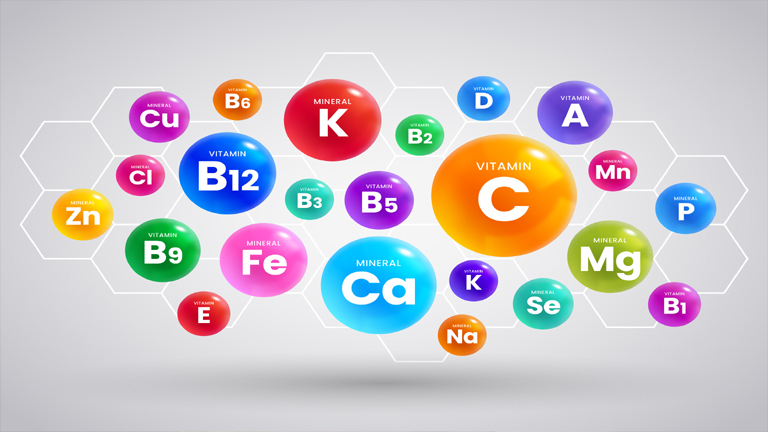Magnesium is an essential mineral that plays a crucial role in over 300 biochemical reactions in the body. Among its various forms, magnesium glycinate has gained popularity due to its high bioavailability and gentle effects on the digestive system. In this comprehensive guide, we’ll explore the benefits, dosage recommendations, potential side effects, and how magnesium glycinate compares to other forms of magnesium.
Must Check: Anxiety Treatment
What Is Magnesium Glycinate?
Magnesium glycinate is a chelated form of magnesium, where magnesium is bound to glycine, a non-essential amino acid. This combination enhances absorption and reduces the likelihood of digestive discomfort, making it an excellent choice for those with sensitive stomachs.
Key Characteristics of Magnesium Glycinate:
-
High Bioavailability: Easily absorbed in the intestines.
-
Gentle on the Stomach: Unlike magnesium oxide or citrate, it rarely causes diarrhea.
-
Calming Effects: Glycine has relaxing properties, supporting better sleep and stress relief.
Health Benefits of Magnesium Glycinate
1. Supports Better Sleep and Relaxation
Magnesium glycinate is known for its calming effects on the nervous system. Glycine, its amino acid component, acts as an inhibitory neurotransmitter, promoting relaxation and improving sleep quality.
Research Insight:
A 2012 study published in Neuropharmacology found that glycine improves sleep quality by lowering core body temperature and modulating serotonin levels.
2. Reduces Anxiety and Stress
Magnesium deficiency has been linked to increased anxiety and stress. Magnesium helps regulate the hypothalamic-pituitary-adrenal (HPA) axis, which controls stress responses.
How It Works:
-
Enhances GABA activity (a calming neurotransmitter).
-
Reduces cortisol (the stress hormone).
3. Improves Muscle Function and Reduces Cramps
Athletes and individuals with muscle cramps often benefit from magnesium glycinate due to its role in muscle contraction and relaxation.
Who Should Take It?
-
People with nighttime leg cramps.
-
Athletes experiencing muscle soreness.
4. Supports Bone Health
Magnesium is essential for calcium absorption and bone formation. Studies suggest that adequate magnesium intake can improve bone mineral density, reducing the risk of osteoporosis.
5. Helps Manage Blood Sugar Levels
Magnesium plays a role in insulin sensitivity. Research indicates that magnesium supplementation may help lower blood sugar levels in people with type 2 diabetes.
6. Alleviates Migraines and Headaches
Low magnesium levels are associated with migraines. Magnesium may help reduce the frequency and intensity of headaches by relaxing blood vessels and improving nerve function.
Magnesium Glycinate vs. Other Forms of Magnesium
| Type of Magnesium | Bioavailability | Primary Benefits | Common Side Effects |
|---|---|---|---|
| Magnesium Glycinate | High | Relaxation, sleep, muscle recovery | Minimal (rarely causes diarrhea) |
| Magnesium Citrate | Moderate | Constipation relief, digestion | Diarrhea, stomach cramps |
| Magnesium Oxide | Low | Heartburn relief, laxative effect | Digestive discomfort |
| Magnesium Malate | Moderate | Energy production, fibromyalgia relief | Mild stomach upset |
Why Choose Magnesium?
-
Best for those with digestive sensitivities.
-
Ideal for long-term use due to minimal side effects.
Recommended Dosage of Magnesium Glycinate
General Guidelines:
-
Adults: 200–400 mg per day (split into two doses for better absorption).
-
For Sleep: 200–300 mg taken 30–60 minutes before bedtime.
-
For Anxiety/Stress: 300–400 mg daily.
Note: Always consult a healthcare provider before starting supplementation, especially if you have kidney issues.
Potential Side Effects and Safety
Common Side Effects (Rare):
-
Mild stomach upset (if taken on an empty stomach).
-
Drowsiness (due to glycine’s relaxing effects).
Who Should Avoid Magnesium Glycinate?
-
People with severe kidney disease.
-
Those on certain medications (e.g., antibiotics, diuretics).
Best Food Sources of Magnesium
While supplements help, dietary sources are equally important:
-
Leafy greens (spinach, kale)
-
Nuts and seeds (almonds, pumpkin seeds)
-
Whole grains (quinoa, brown rice)
-
Legumes (black beans, chickpeas)
Frequently Asked Questions (FAQs)
1. Is Magnesium Glycinate Safe for Daily Use?
Yes, it’s one of the safest forms of magnesium for long-term use due to its gentle nature.
2. Can Magnesium Glycinate Help with Depression?
Some studies suggest magnesium may improve mood by regulating neurotransmitters, but more research is needed.
3. How Long Does It Take to Feel the Effects?
Most people notice improvements in sleep and relaxation within 1–2 weeks.
Conclusion
Magnesium glycinate is a superior form of magnesium due to its high absorption, calming effects, and minimal side effects. Whether you’re looking to improve sleep, reduce anxiety, or support muscle function, this supplement offers a well-rounded solution. Always consult a healthcare professional before starting any new supplement regimen.
By incorporating magnesium into your wellness routine, you can take a proactive step toward better health and well-being.


